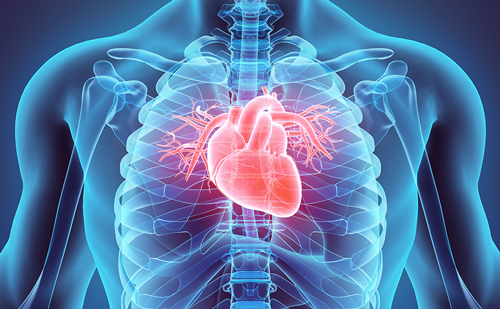Background: Obesity is associated with an increased risk of ventricular arrhythmias and sudden cardiac death. Although the 12-lead electrocardiogram (ECG) may detect repolarisation abnormalities, it lacks the spatial resolution for detailed characterisation of the proarrhythmic substrate associated with obesity. We therefore used electrocardiographic imaging (ECGi) to non-invasively map epicardial potentials to investigate differences in activation and repolarisation in obese vs non-obese individuals.
Methods: 13 obese (mean body max index [BMI] 45.0 ± 4.2kg/m2) and 9 non-obese (BMI 24.9 ± 2.9kg/m2) participants underwent ECGi, in which 256-lead ECG was recorded at rest, during exercise and in the recovery phase, followed by a non-contrast thoracic MR scan to generate individualised heart–torso geometry. Unipolar epicardial electrograms were reconstructed to calculate total activation (TAT) and repolarisation times (TRT), corrected activation–repolartion intervals (ARIc) and their respective dispersions in both groups.
Results: ARIc was longer in obese vs non-obese group (p=0.02), with the greatest difference at 4 minutes post-exercise (264.3 ± 17.8 msvs 242.5 ± 13.0 ms; p=0.02). Obesity was associated with a greater ARIc dispersion interventricular gradient (p=0.02). TRT, RT dispersion and ARIc dispersion were not significantly different between groups (p=0.21, p=0.59, p=0.35, respectively). TRT, RT dispersion, ARIc and ARIc dispersion decreased with exercise (p=0.02, p=0.03, p<0.0001 and p=0.0004, respectively). TAT and AT dispersion were comparable between groups and were unaffected by exercise.
Conclusion: Obesity is associated with prolonged repolarisation and interventricular repolarisation heterogeneity, which manifests with exercise and in the post-exercise recovery phase. These results provide an insight into the proarrhythmic substrate.






